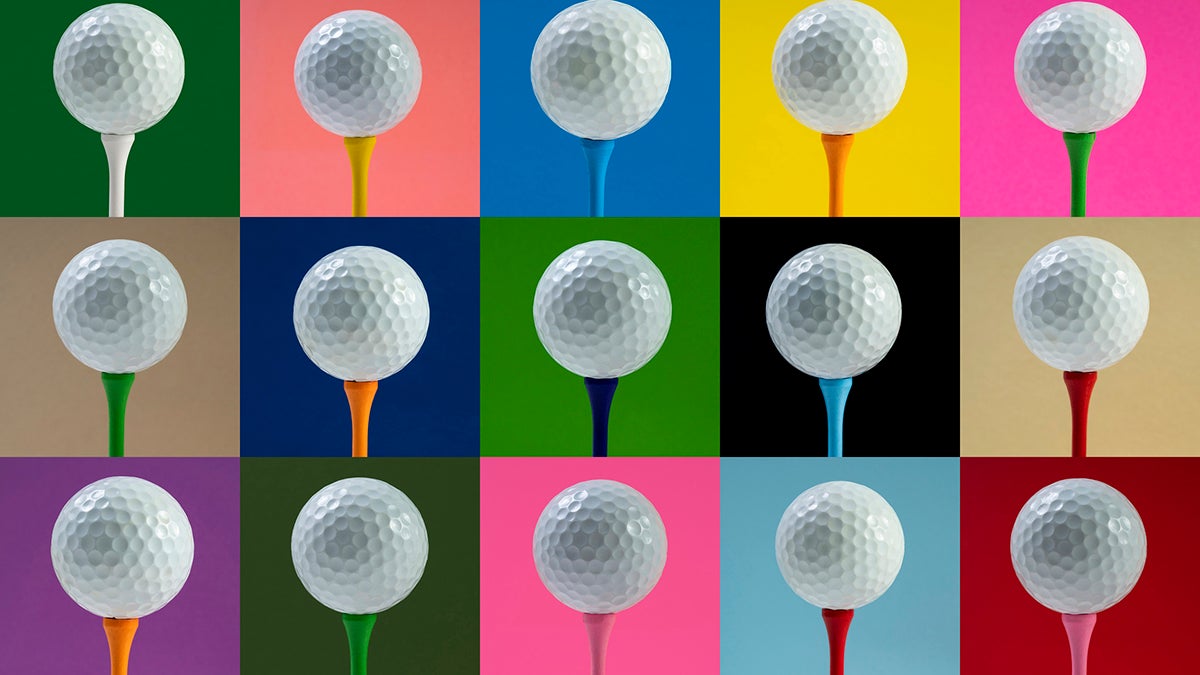Welcome to another edition of the Fully Equipped Mailbag, sponsored by Cleveland/Srixon Golf, an interactive GOLF.com series in which we field your hard-hitting gear questions.
In the last few years, golf ball technology has soared to unprecedented levels. Today’s golf balls promise a near-endless combination of distance, spin, feel and durability–in varying degrees for varying demands. Also, it used to be easier to delineate between golf balls as either made for us (amateurs) or made for them (tour pros). That’s no longer a thing since there are many golf balls equally appropriate for both types of players that feature a dynamic array of technologies for a variety of player types. And it’s not just that, today’s balls also cater to the demands of different clubs in the bag. Put it this way: golf balls have come a long way. And doesn’t look like the tech will be letting up anytime soon.
We’re in the golden age of ball technology, y’all.
The more we think about why white remains the most popular golf ball color, the more we’re left scratching our heads. Despite such tremendous advancements, most golf ball shells still sport a boring shade of vanilla. But, is it possible the tide could be turning towards a more colorful future? Absolutely. Especially if you’re looking at the recent success of new golf balls like Srixon’s Q-Star Tour Divide, which some retailers are struggling to keep on the shelves. (More on that ball in a bit.)
For a long time we associated non-white golf balls with high handicappers, mainly because practically all non-white golf balls were marketed as inexpensive distance balls made [unofficially] for shameless weekend warriors wanting a golf ball that is easier to see and more difficult to lose.
Srixon Q-Star Tour Divide
But in the last few years we’ve seen a shift. Golf ball manufacturers now make premium, high-performance golf balls in not only different colors, but also in different color schemes and patterns. Amateurs are buying patterned and non-white golf balls in droves, and we’ve seen a few breakthroughs in the professional ranks with a handful of players opting for golf balls with painted-on alignment aids and visual patterns to improve how their eyes see the golf ball.
As to whether white golf balls will go the way of the dodo, we here at the Fully Equipped mailbag think it’s inevitable because, why not? We’ve seen the data and the research is pretty clear that shows using a golf ball with alignment aids or visual cues is a net positive. Meaning, that when you use a non-white golf ball it’s likely to help you far more than it could make you worse.
We just need to get over the stigma of using one, that’s all. And that’s a truism for tour professionals as well. There still remains a contingent of competitive golfers who wrongly assume that colored or patterned golf balls won’t perform as well as white ones do, or that the colored look will make them look less serious. We tackled this very subject already in reference to the aforementioned Q-Star Tour Divide, which is a bi-tone golf ball composed of two colors—one for each hemisphere. Our data proved what we already knew — the Divide golf balls performed identically to the white Q-Star Tour in terms of ball flight and spin. If anything, the advantage went to the Divide because it a cinch to use come time to align putts. You can get the matte-finished, urethane-covered Tour Divide in three bright options: yellow/blue, yellow/red, and yellow/orange.
It’s just going to take time to see non-white golf balls become the majority. And let’s remember—there have been numerous attempts to push colored or patterned golf balls into the mainstream, but there’s reason to believe the latest wave of non-white golf balls will pave the way because these balls are backed by real science to promote better alignment, eye relaxation and focus. And in some cases like the DIVIDE, these new golf balls can be used to see the spin and whether or not you’re putting a good roll on the ball. That alone ought to be enough to get more players trending towards non-white golf balls.
We’ve obviously big believers in non-white golf balls and recommend anyone give one a try. When you do, we have full faith it’ll perform identically to a white golf ball of the same variety.
Want to overhaul your bag for 2022? Find a fitting location near you at GOLF’s affiliate company True Spec Golf. For more on the latest gear news and information, check out our latest Fully Equipped podcast below.
